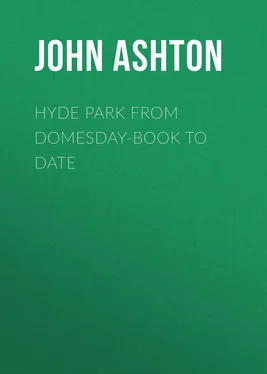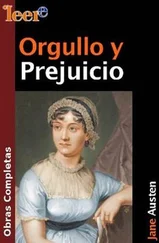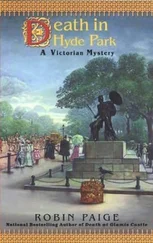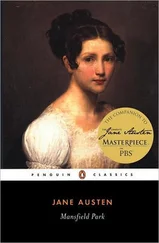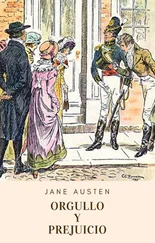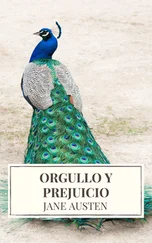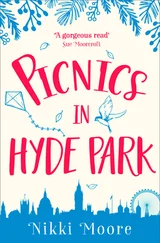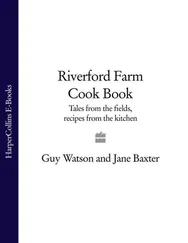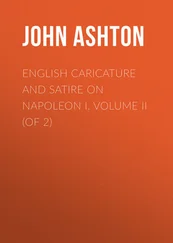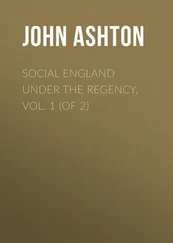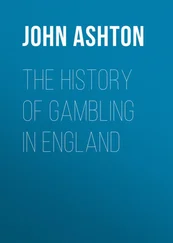John Ashton - Hyde Park from Domesday-book to Date
Здесь есть возможность читать онлайн «John Ashton - Hyde Park from Domesday-book to Date» — ознакомительный отрывок электронной книги совершенно бесплатно, а после прочтения отрывка купить полную версию. В некоторых случаях можно слушать аудио, скачать через торрент в формате fb2 и присутствует краткое содержание. Жанр: foreign_antique, foreign_prose, на английском языке. Описание произведения, (предисловие) а так же отзывы посетителей доступны на портале библиотеки ЛибКат.
- Название:Hyde Park from Domesday-book to Date
- Автор:
- Жанр:
- Год:неизвестен
- ISBN:нет данных
- Рейтинг книги:3 / 5. Голосов: 1
-
Избранное:Добавить в избранное
- Отзывы:
-
Ваша оценка:
- 60
- 1
- 2
- 3
- 4
- 5
Hyde Park from Domesday-book to Date: краткое содержание, описание и аннотация
Предлагаем к чтению аннотацию, описание, краткое содержание или предисловие (зависит от того, что написал сам автор книги «Hyde Park from Domesday-book to Date»). Если вы не нашли необходимую информацию о книге — напишите в комментариях, мы постараемся отыскать её.
Hyde Park from Domesday-book to Date — читать онлайн ознакомительный отрывок
Ниже представлен текст книги, разбитый по страницам. Система сохранения места последней прочитанной страницы, позволяет с удобством читать онлайн бесплатно книгу «Hyde Park from Domesday-book to Date», без необходимости каждый раз заново искать на чём Вы остановились. Поставьте закладку, и сможете в любой момент перейти на страницу, на которой закончили чтение.
Интервал:
Закладка:
“At last, the Dove came with the Olive Branch,
And told, for certain, that we should advance
Out of the Field; O then we leapt for joy,
And cry’d with one accord, Vive le Roy .
What did the Sutlers then? nay, what do ye think?
For very grief, they gave away their drink:
But it’s no matter, let them laugh that wins,
They were no loosers (God forgive their sins).
“Upon Gunpowder Treason day, (at Night)
We burnt our Bed-Straw, to make Bone fire light;
And went to Bed, that night, so merry hearted
For joy we and our Lodgings should be parted;
Next morning we were up by break of day,
To be in readinesse to march away.
We bid adue to Hide Park’s fruitful Soil,
And left the Country to divide the Spoyl.
With flying Colours we the City enter,
And, then, into our Quarters boldly venture.
Our Land-Ladyes sayd Welcome (as was meet),
But, for our Landlords, some lookt sowr, some sweet.
So soon as we were got into warm Bed,
We look’t as men new metamorphosed.
But now I think ’tis best to let them sleep,
Whilst I out of the Chamber softly creep,
To let you know, that now my task is done,
Would I had known as much when I begun.
A sadder time, I freely dare engage
Was never known before, in any Age.
God bless King Charles and send him long to reign,
And grant we never may know the like again.”
In connection with Hyde Park and the Restoration, I may mention the following, copied from The Times , December 18, 1862. “A Relic of the Past in Hyde Park. Perhaps few of the many who visit this Park are aware that on the right hand side of the Carriage drive, between the Receiving house and the Bridge, there still remains an interesting relic of the Stuart period. It is a tree, one of two planted by Charles II. from acorns taken from the Boscobel Oak, in Somersetshire, in which his father successfully sought refuge , and were planted here to commemorate the event. They have both been dead some years, and one, much decayed, was removed in 1854; the other, beautifully clothed with ivy, which gives it the appearance of life, still remains. In common with all the other old trees in the Park, it is protected by a fence of iron hurdles; but, surely, a relic like this deserves a handsome and appropriate railing, with a descriptive brass plate affixed, to point out to strangers this historical antiquity, now known only to local historians.”
If the traditional lore of the writer of the above is on a par with his historical knowledge ( vide italics ) this statement has not much value. Indeed, a correspondent in Notes and Queries (3s. iii. 96), referring to this paragraph, and speaking of the trees, says “the tradition really and truly connected with them is the fatal duel fought by the fifth Lord Mohun and the Duke of Hamilton, in November, 1712.”
Hyde Park seems to have been first opened to the public about 1637, for in the dedication of James Shirley’s play of Hide Parke (published in that year) to the Right Hon. Henry, Earl of Holland, he says, “This Comedy in the title, is a part of your Lordship’s Command, which heretofore grac’d, and made happy by your smile, when it was presented, after a long silence, upon first opening of the Parke .” And it is from this contemporary play that we are able to learn somewhat of the Park itself. Nightingales and cuckoos abounded, and both are several times mentioned.
Mistress Caroll. Harke, Sir, the Nightingale, there’s better lucke Comming towards us.
Fairfield. When you are out breath
You will give over, and for better lucke,
I do beleeve the bird, for I can leave thee,
And not be in love with my owne torment.
M. Ca. How, sir?
Fa. I ha said, stay you and practise with the bird,
’Twas Philomel they say; and thou wert one,
I should new ravish thee.
Mistress Bonavent. I heard it yesterday warble so prettily.
Lacy. They say ’tis luckie, when it is the first
Bird that salutes our eare.
Bo. Doe you believe it?
Tryer. I am of his minde, and love a happy Augury.
La. Observe the first note alwayes
Cuckoo!
Is this the Nightingale?
And then also there were refreshments to be taken at the Keeper’s Lodge (sometimes called Price’s Lodge, from Gervase Price, a keeper), as we read in Hide Parke .
Rider. I wish your sillabub were nectar, Lady.
Mistress Bonavent. We thank you, sir, and here it comes already.
Enter Milkemaide.Mistress Julietta. So, so, is it good milke?
Bon. Of a Red Cow.
Mistress Caroll. You talke as you inclin’d to a consumption. Is the wine good?
Pepys mentions this Lodge and its refreshments more than once. “ June 3, 1668. To the Park, where much fine company and many fine ladies, and in so handsome a hackney I was, that I believe, Sir W. Coventry and others who looked on me, did take me to be in one of my own, which I was a little troubled for: so to the Lodge and drank a cup of new milk, and so home.” – “ April 25, 1669. Abroad with my wife in the afternoon to the Park, where very much company, and the weather very pleasant. I carried my wife to the Lodge, the first time this year, and there, in our coach, eat a cheese cake and drank a tankard of milk.”
Not to know the Lodge was to show oneself of small account, as we see in a comedy called “The English Monsieur,” by the Hon. James Howard, son of the Earl of Berkshire, acted with much applause at the Theatre Royal, in 1674.
“Comely. Nay, ’tis no London female; she’s a thing that never saw Cheesecake, Tart, or Syllabub at the Lodge in Hyde Park.”
According to Thomas Brown, of Shifnall, the ladies also partook of refreshment in their coaches, for he says, – “See, says my Indian , what a Bevy of Gallant Ladies are in yonder Coaches; some are Singing, others Laughing, others Tickling one another, and all of them Toying and devouring Cheese Cakes, March-Pane, and China Oranges.” 23 23 “Amusements Serious and Comical, Calculated for the Meridian of London.” Lond. 1700, p. 55.
And this in the sober days of William and Mary!
About this time the name of “the Lodge” was generally dropped, and it was called the Cake House or Mince Pie House, until it was pulled down early middle of the century. It was situated nearly on the site of the present Receiving House of the Royal Humane Society, as is shown in a “Plan of Hyde Park, as it was in 1725. From a Plan of the Parish of St. George, Hanover Square, in the Vestry Room of that Parish.” 24 24 “Environs of London.” D. Lysons, 2nd ed. vol. ii. part i. p. 117.
It was made of timber and plaster, and must have had a very picturesque look when the accompanying illustration was taken in 1826. The other view of it, in 1804, shows its surroundings in the Park. “The Cake House” furnished the title of one of Charles Dibdin’s table entertainments, first performed in 1800.
Then too there were the Orange girls, whose vocation was not entirely confined to the theatres,
and who were chaffed by, and gave saucy answers to, the beaux. In a play by Thomas Southern (the author of Isabella and Oroonoko ), published in 1693, called The Maid’s last Prayer , Or Any, rather than Fail , we find (p. 37) Lord and Lady Malapert discussing the propriety of visiting their country seat.
L. Mal. Well, well, there are a thousand innocent diversions.
La. Mal. What! Angling for Gudgeons, Bowls, and Ninepins?
L. Mal. More wholesome and diverting than always the dusty Mile Horse driving in Hide-Park.
Читать дальшеИнтервал:
Закладка:
Похожие книги на «Hyde Park from Domesday-book to Date»
Представляем Вашему вниманию похожие книги на «Hyde Park from Domesday-book to Date» списком для выбора. Мы отобрали схожую по названию и смыслу литературу в надежде предоставить читателям больше вариантов отыскать новые, интересные, ещё непрочитанные произведения.
Обсуждение, отзывы о книге «Hyde Park from Domesday-book to Date» и просто собственные мнения читателей. Оставьте ваши комментарии, напишите, что Вы думаете о произведении, его смысле или главных героях. Укажите что конкретно понравилось, а что нет, и почему Вы так считаете.
